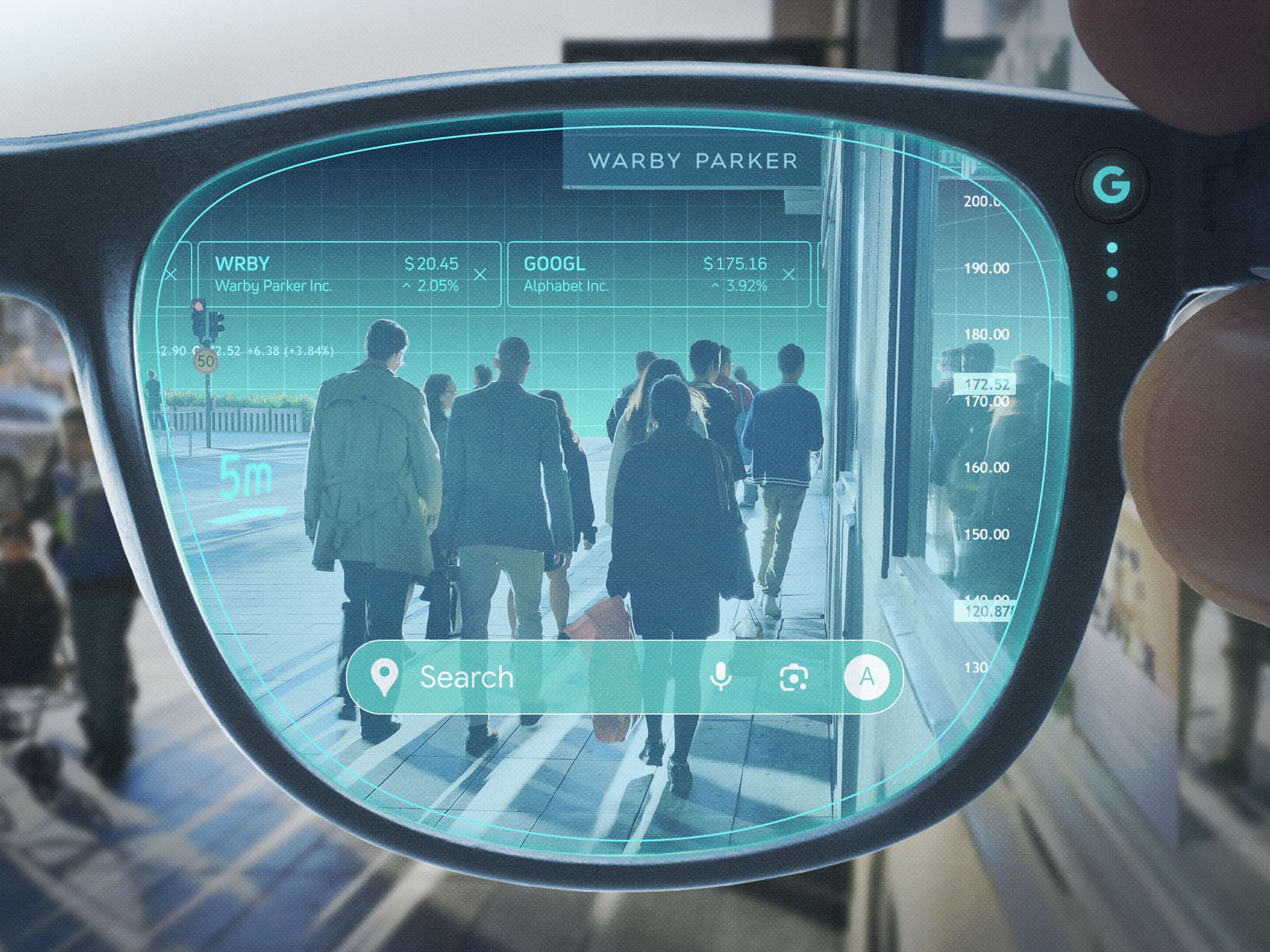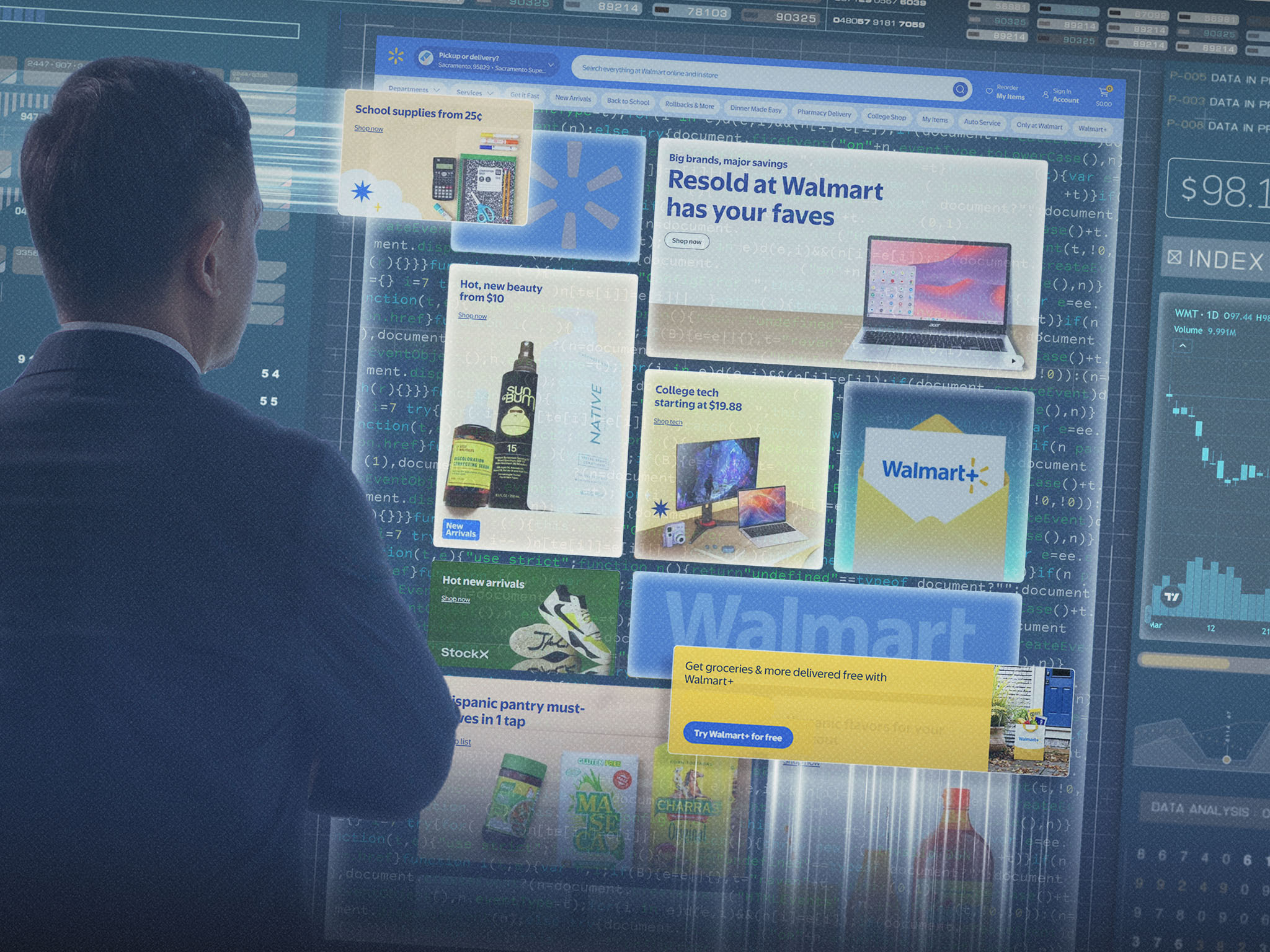In his 2012 novel Existence, futurist and bestselling author David Brin imagined a world four decades out where people wore connected goggles that filtered and augmented their visual reality—layering in data, news alerts and even personalized worldviews. At the time, it felt like pure science fiction. But ever since, it’s been mostly a question of when, not if, the tech would go mainstream. That moment may finally be now.
Google (NASDAQ: GOOGL) revealed this week that it’s partnering with Warby Parker (NYSE: WRBY)—a fashion-forward American eyewear brand—to blend extended reality, or XR, with AI, and the end result will be a very smart pair of glasses equipped with a camera, microphone and speakers. An optional, in-lens display will provide “helpful information right when you need it.”
“What if your AI assistant could see the world from your perspective and offer hands-free help?” Google wrote in a blog post on Tuesday. “Pairing these glasses with Gemini means they see and hear what you do, so they understand your context, remember what’s important to you and can help you throughout your day.”
Warby Parker shares shot up 16% on the news. The company has already been gaining market share in the US with its direct-to-consumer website and stores located in premier shopping centers, many of which offer onsite exams for prescription eyewear and accept vision insurance. With more than 60% of American adults wearing corrective lenses, the partnership has the potential to make getting a pair of smart glasses as easy as an annual eye checkup. Google also plans to work with other frame designers including Gentle Monster and Kering Eyewear (CBOE: KER).
Life after the gadget dustbin
It’s a big step toward the future Brin envisioned, but it’s also notable because others have tried to do the same thing before—and mostly did not live up to the hype. Apple (NASDAQ: AAPL), for instance, launched the Vision Pro last year, although it’s bulky and not designed to be worn all day long. Meta (NASDAQ: META) is also in the game with its smart Ray-Bans made by EssilorLuxottica (CBOE: EL), though adoption remains somewhat niche.
The biggest failure came from Google itself with the 2013 launch of Google Glass. While the product was widely derided for its weird looks, it was simply ahead of its time. Many people wanted to try out augmented reality, but the tech was more clunky than useful without the smart AI assistants that are now ubiquitous and fast 5G connections. It could be easy to worry that Google might flub it again, but there’s also reason to believe they’ll get it right this time around.
Apple, for example, had what’s perhaps the biggest turnaround story ever after it released its Newton personal digital assistant all the way back in 1993. Also clunky and ahead of its time, it was like a smartphone—but without a phone, and before the mobile Internet. The vision was there but the infrastructure wasn’t, and it quickly disappeared into the dustbin of gadget history. Apple tried again a decade later when it began to develop the iPhone in 2004 before the first generation was released in 2007. Everyone knows how that went, with the global market for the smartphone category presently worth $580 billion a year. Sometimes it just takes a little bit of time.
Google could be on a similar track as it tries again to breathe life into a brand new product category, twelve years after its first failed foray. This time around the infrastructure exists, the AI is sharp, and Warby Parker will make it stylish. People may finally get to put on a pair of smart glasses that will change the way they see—and interact with—the world, and actually want to keep them on.









Comments